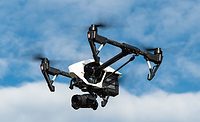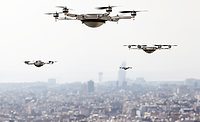But, late last year, software problems allegedly grounded two Predator B drones on the northern U.S. border patrol. And there has been evidence that in war operations in Afghanistan, insurgents have tapped into some image traffic, although U.S. military officers discount the chance of any real damage. In the U.S., the Federal Aviation Administration must issue a certificate of authorization (COA) for any uses of unmanned aerial vehicles (UAV).
Currently, law enforcement organizations must follow the COA process if they wish to conduct even demonstration flights, although it is rare for approval of commercial uses, except a couple of times to fight wild fires in California. The FAA has already worked with urban police departments in Houston and Miami on test programs involving unmanned aircraft. In the United States alone, approximately 50 companies, universities, and government organizations are developing and producing some 155 unmanned aircraft designs. Ironically, many other countries allow both the manufacture and commercial use of UAVs.
Predators, which in active military theaters can carry weapons, launch from some semblance of a runway. Smaller Ravens are, believe it or not, hand launched. Not surprisingly, the Predators have vastly more airtime than the Ravens, which often follow preprogrammed patrol patterns. Not to be beat-out by the Army and Air Force, the U.S. Navy, contractors and others have developed myriad unmanned underwater vehicles. Looking like torpedoes and turtles, these vehicles help in locating things underwater as well as conduct patrols, directed from ships, from land and even from buoys. In the future, advances in machine intelligence, closed-system propulsion, better rechargeable batteries, digital storage, through-water communications and rugged-environment embedded digital signal processing promise more security, commercial and military applications.
There are also unmanned programmable helicopters that more often are used to carry materials than as a security or patrol vehicle.





